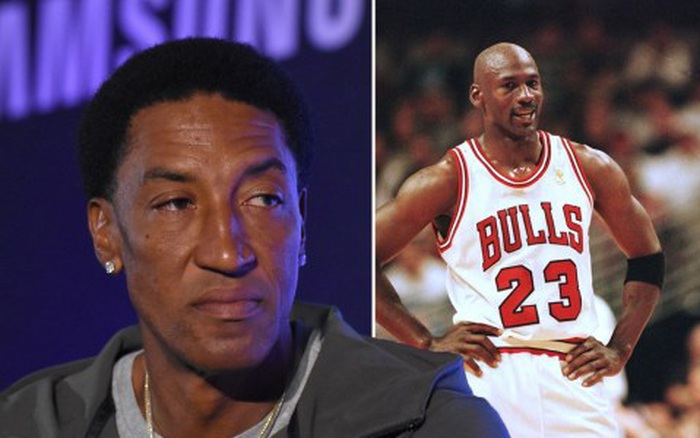Jordan and Pippen: From Dynasty to Divide
This may be the most talked-about behind-the-scenes story in modern basketball history. Michael Jordan and Scottie Pippen, once considered one of the greatest duos to ever grace the NBA hardwood, now stand on opposite sides of a fractured legacy. The source of the break is no secret: the release of The Last Dance, the acclaimed 2020 documentary that revisited the Chicago Bulls’ dynasty of the 1990s, reignited old wounds and stirred new resentments.
For Jordan, the ten-part series was a triumphant reminder of his unparalleled dominance, a global celebration of his competitive fire and championship pedigree. For Pippen, however, the narrative felt less like a tribute to greatness and more like a reminder of how easily history can be rewritten. He felt reduced, not elevated; sidelined, not spotlighted. To him, the story of the Bulls was told as the saga of one man’s rise, with everyone else cast as supporting actors in the theater of Jordan’s glory.

Pippen’s frustration was clear. In interviews and in his memoir, Unguarded, he expressed that The Last Dance celebrated Jordan at the expense of the rest of the roster. He argued that his own sacrifices, his defense, his versatility, and his steady brilliance were overshadowed, framed as mere scaffolding to highlight Jordan’s brilliance. It was as though the dynasty was depicted as the product of one transcendent star, rather than the collective effort of a roster that included Pippen, Horace Grant, Toni Kukoč, Steve Kerr, and Dennis Rodman.
The tension is rooted not only in how the story was told, but also in what it symbolized. For Pippen, it was a fresh reminder of the years when his contributions were often undervalued, both in recognition and in salary. He played through injuries, took on defensive assignments against the league’s toughest stars, and carried the Bulls during Jordan’s first retirement. Yet, when the defining portrait of the dynasty was painted, he felt his role was diminished. The respect he craved never matched the sacrifices he made.
The irony is undeniable: the very qualities that made their partnership legendary—Jordan’s relentless hunger to dominate and Pippen’s quiet willingness to do the dirty work—are now the very forces that divide them. Jordan’s myth thrives on the idea of singular greatness; Pippen’s truth rests on the belief that no dynasty can exist without balance and trust.
For fans, the fallout has been disorienting. Jordan and Pippen were once inseparable in memory, their names linked in highlight reels, championship banners, and six golden trophies. They represented synergy, trust, and an almost telepathic connection on the floor. Jordan could score 40, but it was often Pippen’s defense, playmaking, or timely basket that secured the win. Together, they embodied what a duo could achieve when egos found harmony in pursuit of victory. To see that harmony unravel in public has been jarring, like watching a masterpiece painting crack under the weight of time.
The documentary itself remains a masterpiece in storytelling, but perhaps too much in Jordan’s voice. He had final say over its production, shaping a narrative that highlighted his struggles, his triumphs, and his competitive fire. Critics argue that it became less a documentary and more a coronation, a crowning of the “GOAT” with little room for nuance. For those who lived the dynasty from the inside, that editorial choice reopened scars.

And yet, beneath the bitterness, there lingers a truth that neither man can escape: their legacies are intertwined. Jordan may be remembered as the greatest of all time, but his six rings came with Pippen by his side. Pippen may feel slighted, but his place in history is secure because of what they built together. One cannot tell the story of the 1990s Bulls without acknowledging both.
So where does this rift leave their relationship now? Reports suggest the two rarely communicate, their friendship—if it can still be called that—reduced to echoes of the past. Pippen’s public criticisms, Jordan’s silence, and the weight of old resentments suggest reconciliation may never come. Perhaps their story is less about brotherhood and more about the fragile nature of greatness, about how even dynasties leave behind fractures invisible at first but undeniable with time.
For basketball lovers, the Jordan–Pippen saga is both a cautionary tale and a source of fascination. It reminds us that behind the banners and rings are real men with pride, ego, and wounds that never fully heal. It forces us to wrestle with uncomfortable questions: Do we celebrate individuals at the expense of teams? Do legends rewrite history, or does history inevitably distort the truth?
In the end, Jordan and Pippen gave the world a dynasty. They delivered moments that defined an era and set a standard for excellence few will ever touch. But the story does not end with six championships. It continues, messy and unresolved, in the lingering feud between two men who once made basketball look effortless, and now struggle with the weight of how their story has been told.
The game is long over, but the battle for legacy still rages. And in that battle, perhaps the greatest mystery remains: when history looks back decades from now, will it remember them as brothers in glory—or rivals in memory?
Leave a Reply